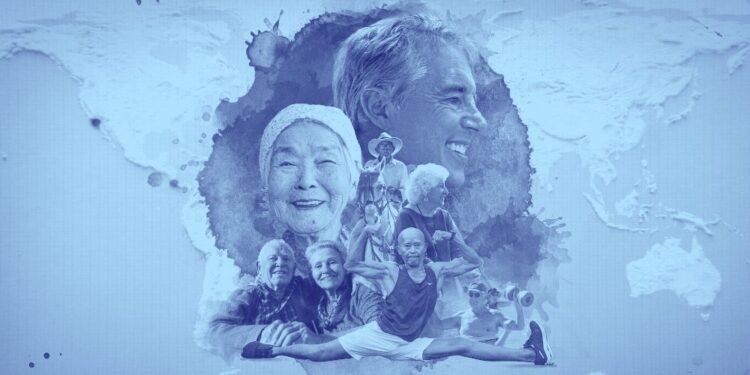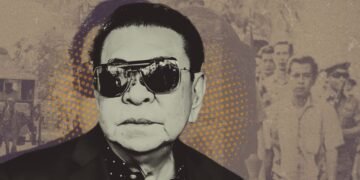Why does it feel like aging is a trap these days? You hit 40, your back hurts, your bloodwork looks like a crime scene, and suddenly your doctor has you on a “maintenance plan.”
Meanwhile, there are places on Earth where 90-year-olds are still hiking hills and laughing over wine. These communities aren’t buying collagen powder or doing 10-step morning routines.
They’re just… living. And living well enough to make the rest of us look like we’re doing it wrong.
The mystery of the world’s longest-living communities
Blue Zones are five regions worldwide where people consistently reach 90, even 100, with minimal chronic illness.
These regions weren’t discovered through folklore. They were identified through rigorous demographic and health data by National Geographic fellow Dan Buettner and his research teams. The five original Blue Zones are:
- Okinawa, Japan – Known for its plant-heavy diet and strong sense of purpose (ikigai).
- Sardinia, Italy – Mountain villages where elders remain physically active well into old age.
- Nicoya, Costa Rica – Home to mineral-rich water and tight-knit family structures.
- Ikaria, Greece – An island where afternoon naps and fresh Mediterranean food are a way of life.
- Loma Linda, California, USA – A community of Seventh-day Adventists who prioritize faith, plant-based diets, and rest.
Researchers found that these areas have ten times more centenarians than the average U.S. community. And they didn’t get there by obsessing over apps, supplements, or HIIT workouts—they simply live in environments that make healthy choices the default.
Are Blue Zones a myth or a model worth following?
Some researchers have raised questions about the data. Critics like biologist Saul Newman argue that inflated numbers could be the result of poor record-keeping, fraud, or misreported ages. He points to gaps in birth registries, especially in older rural populations, that may artificially boost centenarian counts.
Blue Zones researchers push back, saying that every region was verified with rigorous demographic validation. Local experts were trained to cross-check ages using ancestral records, community registries, and in-person interviews.
While the debate continues, what’s hard to ignore is the consistency of certain lifestyle patterns. Independent studies confirm that habits linked to long life—like plant-heavy diets, strong social bonds, and daily low-intensity movement—directly reduce the risk of chronic illness.
The habits that set them apart
So what exactly are these habits? Blue Zones research identified nine common lifestyle traits, now famously called the “Power 9.”
These are not flashy health hacks but ingrained ways of life: walking instead of driving, eating mostly plants, stopping meals before feeling full, and sharing food with family or friends. Faith-based communities and close-knit social circles also play a major role in their well-being.
Diet is particularly striking. Across Blue Zones, meals are 90–95% plant-based. Beans, whole grains, vegetables, and local produce dominate the plate. Meat is reserved for special occasions, often just a few times a month.
Processed foods and refined sugar are rare. This kind of eating pattern is consistent with modern research showing that plant-forward diets can lower the risk of heart disease, diabetes, and certain cancers.
And it’s not just about what they eat. Purpose and community matter. Having a strong reason to get out of bed each morning, whether it’s caring for family or contributing to the community, is tied to lower stress and better mental health.
Frequent, natural movement—gardening, walking to neighbors, climbing hills—keeps their bodies functional well into old age.
Can we adopt these lessons in modern life?
Blue Zones aren’t defined by wealth or access to cutting-edge healthcare.
They’re defined by environments that naturally push people toward healthier decisions. Buettner’s follow-up projects in U.S. cities show that it’s possible to adapt these principles in modern settings.
Initiatives like making streets walkable, improving food access, and encouraging family dinners have reduced obesity and improved community health outcomes.
For many urban professionals, the challenge is balancing long work hours, processed convenience foods, and tech-driven isolation. But the core takeaways are adaptable.
Walking more, building real community connections, eating fewer processed foods, and maintaining family rituals can be done in any city. These habits aren’t expensive or complicated. They’re small adjustments that, over time, may extend not just your lifespan but the quality of your later years.
A lesson worth paying attention to
The Blue Zones research isn’t perfect, and even researchers admit that some longevity numbers may be inflated due to poor record-keeping in rural populations.
But the overarching lesson remains powerful: health is built, not bought. It grows out of purpose, connection, nutritious food, and consistent movement.
We don’t need to move to a fishing village in Okinawa or a mountain town in Sardinia to borrow these habits. We need to rethink the daily defaults we allow in our lives. The science shows that small shifts—sharing more meals with family, getting off the couch, creating routines that downshift stress—can have measurable effects.
Living past 100 may not be the goal for everyone.
But staying sharp, strong, and engaged for as long as possible? That’s something worth designing for—and the Blue Zones have already shown us how.











